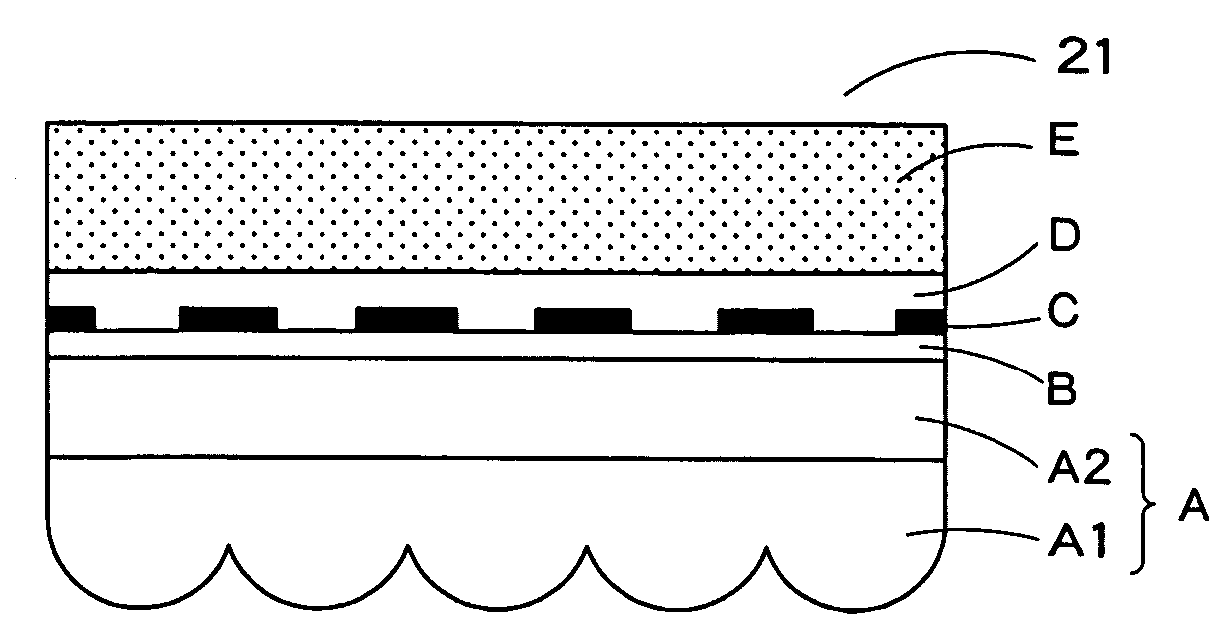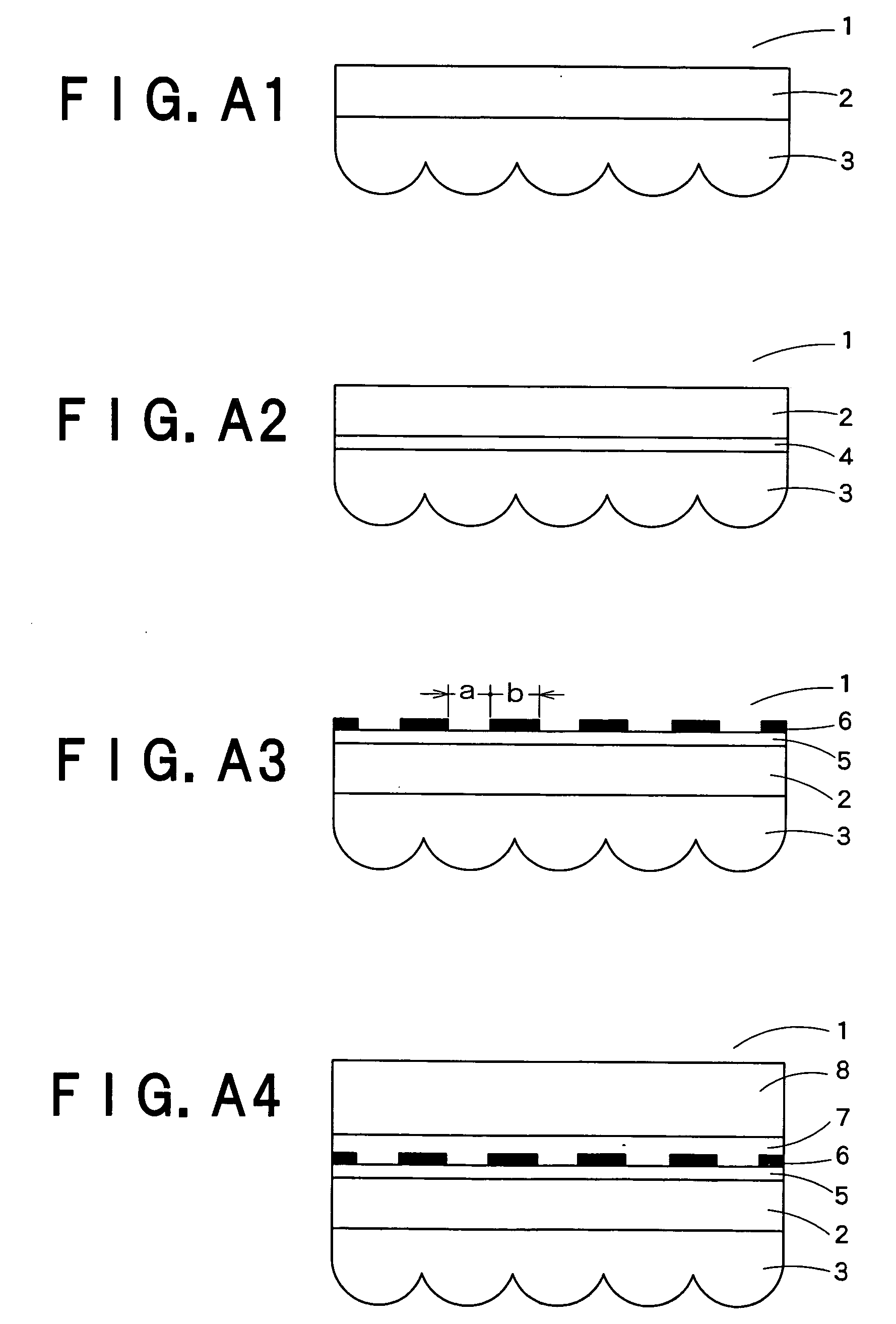Optical sheet and process for producing the same
a technology of optical lens and production process, applied in the field of optical lens, can solve the problems of increasing the production cost of optical lens sheet, difficult to achieve finer pitch than a given level, and relatively expensive photosensitive resins, etc., and achieves the effect of low cost and easy production of optical lens sh
- Summary
- Abstract
- Description
- Claims
- Application Information
AI Technical Summary
Benefits of technology
Problems solved by technology
Method used
Image
Examples
examples
[0193] The following Examples further illustrate the present invention but do not limit the present invention.
example a1
[0194] Pellets of a methacryl-butadiene-styrene copolymer resin (MBS) having a softening temperature of 98° C. were introduced into a hopper of an extrusion embossing apparatus shown in FIG. A7.
[0195] This apparatus was provided with a barrel which had been divided into six parts. The temperatures of the six parts were set respectively to 165° C., 205° C., 210° C., 240° C., 250° C., and 250° C. successively in that order from the part closest to the hopper to the part farthest from the hopper. The temperature of the die part was set to 250° C. The molten MBS was supplied through this die and extruded onto a substrate film (a transparent polyester film (PET film), thickness 50 μm), followed by embossing. At that time, the molding roll temperature was set to 80° C.
[0196] In this case, the take-off speed of the substrate film was 3 m / min.
[0197] Molding under the above conditions provided an optical sheet (total thickness 150 μm) according to the present invention having a cylindrica...
example a2
[0200] Under the same temperature conditions and take-off speed conditions as in Example A1, the same resin as used in Example A1 was extruded on the substrate film followed by embossing. Thereafter, the substrate film was separated to produce a sheet provided with cylindrical lenses with a pitch of 90 μm and a thickness of 125 μm.
[0201] Further, in the same manner as in Example A1, a photosensitive pressure-sensitive adhesive containing a radical reaction initiator was coated to a thickness of 20 μm. A parallel light radiation was applied at an exposure corresponding to 150 mJ / cm2 to the sheet thus obtained on its cylindrical lens face side. The coating of the photosensitive pressure-sensitive adhesive only in its sites through which the radiation focused by the effect of the lenticular lens shape had been passed as the light path was cured, and the unexposed parts remained in a tacky state. A black transfer material was applied to the pressure-sensitive adhesive surface in this s...
PUM
| Property | Measurement | Unit |
|---|---|---|
| thickness | aaaaa | aaaaa |
| thickness | aaaaa | aaaaa |
| softening temperature | aaaaa | aaaaa |
Abstract
Description
Claims
Application Information
 Login to View More
Login to View More - R&D
- Intellectual Property
- Life Sciences
- Materials
- Tech Scout
- Unparalleled Data Quality
- Higher Quality Content
- 60% Fewer Hallucinations
Browse by: Latest US Patents, China's latest patents, Technical Efficacy Thesaurus, Application Domain, Technology Topic, Popular Technical Reports.
© 2025 PatSnap. All rights reserved.Legal|Privacy policy|Modern Slavery Act Transparency Statement|Sitemap|About US| Contact US: help@patsnap.com



